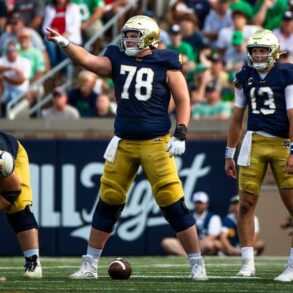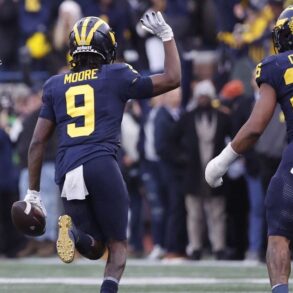
The 2024 College Football National Championship game between Ohio State and Notre Dame drew an audience of 22.1 million, marking a 12% decrease from the 25 million who tuned in for last year’s Michigan vs. Washington matchup. The decline reflects a larger trend of viewer fatigue as football fans face an increasingly packed postseason schedule.
This year’s expanded college football playoff format introduced five consecutive days of postseason games from January 9 to January 13, culminating in the championship game on Monday night. This extended schedule coincided with the NFL playoffs, creating stiff competition for attention.
Ran over Notre Dame! Ohio State running back Quinshon Judkins scored constantly against Fighting Irish
The NFL’s Wild Card round also saw a 9.5% decline in total audience compared to last year, while the divisional-round games over the weekend dropped 8.5%. With football games dominating airwaves across multiple days, audiences may be experiencing a saturation point, leading to diminishing returns for marquee matchups.
Related:
Shifting traditions and competing priorities
Historically, college football crowned its champion around New Year’s Day, but the introduction of a four-team playoff-and now a 12-team tournament-has pushed games deeper into January. This shift has resulted in college football directly competing with the NFL for viewership during its high-stakes playoff rounds.
The overlap has raised questions about whether the expanded college playoff system, while providing more games, risks diluting the impact of its most important event. For many fans, the sheer volume of games may make it harder to prioritize tuning in, especially when NFL playoff matchups are on the same weekend.
What the numbers reveal
While the championship game’s 22.1 million viewers is still a strong showing, the drop in ratings highlights the challenge of balancing more games with maintaining excitement. The NFL and college football are juggernauts in their own right, but as they increasingly overlap, the competition for attention could continue to affect viewership.
For now, the debate over whether there can be too much football remains open, with both leagues needing to consider how to keep their audiences engaged amid a crowded sports calendar.
This post was originally published on this site be sure to check out more of their content.





